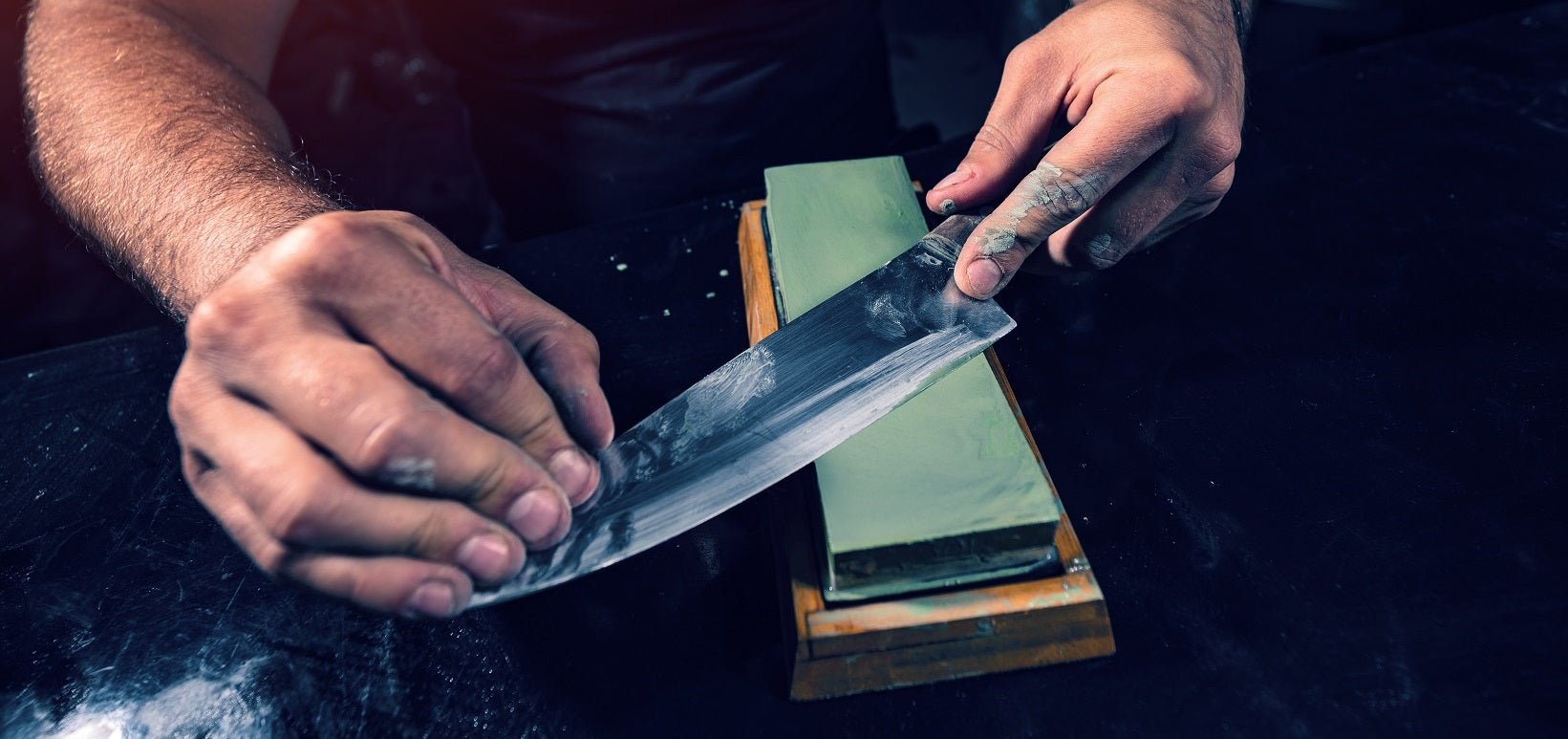Search
Use this section to help customers find the products they're looking for.


Keeping your knives sharp is an essential part of maintaining their functionality, as a dull blade can make even the most straightforward cutting tasks challenging. Sharpening your knives at home can seem intimidating, but with a few simple tips, you can get your knives sharp and ready to use in no time.
Choose the Right Sharpening Method
There are several ways to sharpen a knife, but the most common methods are using a sharpening stone or a mechanical wheel. Each method has its advantages and disadvantages, so choose the one that best suits your needs.
Sharpening Stones
Sharpening stones are the traditional method of sharpening Japanese knives and require a bit of practice to use effectively. There are various types of sharpening stones available, such as diamond, water, and oil stones. Choose a stone that corresponds to the steel type of your knife.
To sharpen your knife using a stone, hold the blade at a 15 to 20-degree angle and run it along the stone in a back-and-forth motion. Repeat the process on the other side of the blade until you achieve the desired level of sharpness.

Mechanical Sharpener
Mechanical knife sharpeners come in various sizes and shapes and use a variety of abrasives. These knife sharpeners are often used as a quick and cheap method for sharpening knives however they are not optimal as they remove a lot of metal and tend to heat the blades when they are unproperly used. In addition, they should never be used on knives made from hard steel or with fine edges such as Japanese knives.

Honing Rod
Unlike many believe, a honing rod is your best friend to maintain you edge on a regular basis. Unlike sharpening tools, a rod is great to align your edge without removing material or changing the geometry of your edge. Hold the honing steel vertically and run the blade at a 15 to 20-degree angle along the steel in a sweeping motion, alternating sides of the blade. Once the rod no longer give you the desired results, get your knife sharpened.

Tips for Successful Sharpening
Sharpening knives takes a bit of practice, so be patient and follow these tips for the best results:
Conclusion Sharpening your knives at home may seem daunting, but with the right tools and techniques, it can be a straightforward process. Keep your knives sharp with regular honing, then sharpen them every several months. You'll notice a significant improvement in your cutting performance. Remember to take your time and be patient, and you'll have sharp knives ready to tackle any task in your kitchen.
Use this section to help customers find the products they're looking for.
Leave a comment